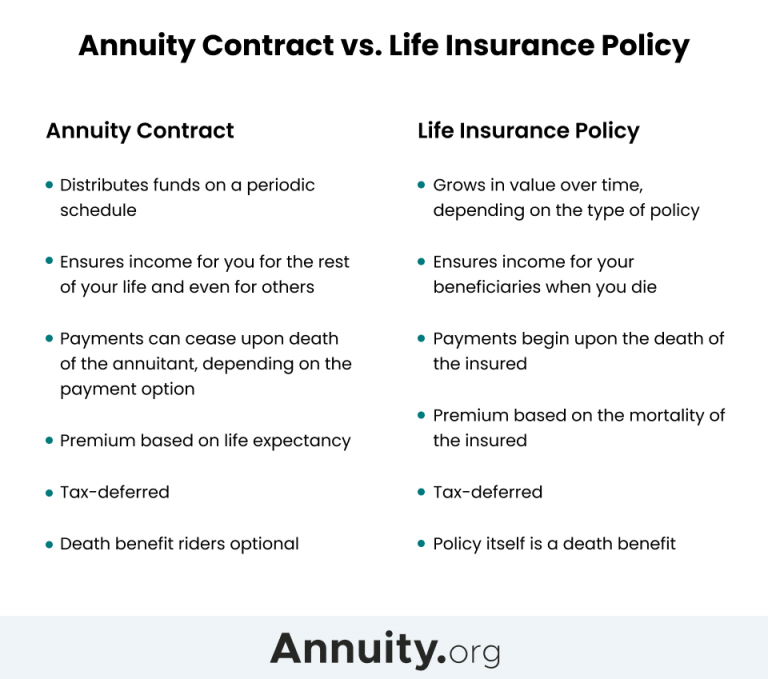All Categories
Featured
Table of Contents
The repayment might be spent for growth for an extended period of timea solitary costs delayed annuityor spent for a brief time, after which payment beginsa single costs instant annuity. Single premium annuities are usually funded by rollovers or from the sale of a valued property. A versatile premium annuity is an annuity that is intended to be funded by a collection of repayments.
Proprietors of dealt with annuities understand at the time of their purchase what the worth of the future cash money flows will be that are produced by the annuity. Certainly, the number of capital can not be recognized in advance (as this depends upon the contract proprietor's life expectancy), yet the ensured, fixed rate of interest at the very least provides the owner some level of certainty of future revenue from the annuity.
While this distinction seems easy and simple, it can significantly impact the value that an agreement proprietor ultimately originates from his/her annuity, and it develops significant unpredictability for the contract owner - Understanding variable annuities. It additionally generally has a material influence on the degree of fees that a contract proprietor pays to the issuing insurance provider
Set annuities are commonly made use of by older financiers who have limited assets yet that intend to balance out the danger of outliving their properties. Set annuities can work as an effective device for this purpose, though not without certain disadvantages. In the instance of instant annuities, once an agreement has actually been acquired, the contract owner gives up any and all control over the annuity possessions.
Breaking Down Your Investment Choices A Comprehensive Guide to Variable Annuities Vs Fixed Annuities What Is the Best Retirement Option? Features of Deferred Annuity Vs Variable Annuity Why Choosing the Right Financial Strategy Is Worth Considering How to Compare Different Investment Plans: Simplified Key Differences Between Different Financial Strategies Understanding the Key Features of Long-Term Investments Who Should Consider Fixed Annuity Or Variable Annuity? Tips for Choosing the Best Investment Strategy FAQs About Variable Annuity Vs Fixed Annuity Common Mistakes to Avoid When Planning Your Retirement Financial Planning Simplified: Understanding Fixed Annuity Vs Equity-linked Variable Annuity A Beginner’s Guide to Smart Investment Decisions A Closer Look at How to Build a Retirement Plan
A contract with a common 10-year surrender period would bill a 10% abandonment cost if the contract was given up in the very first year, a 9% surrender fee in the 2nd year, and so on up until the abandonment cost gets to 0% in the agreement's 11th year. Some deferred annuity contracts have language that enables tiny withdrawals to be made at different periods throughout the surrender period without penalty, though these allowances normally come with an expense in the kind of reduced guaranteed rate of interest.
Equally as with a dealt with annuity, the proprietor of a variable annuity pays an insurer a lump sum or collection of settlements in exchange for the assurance of a series of future repayments in return. But as pointed out above, while a dealt with annuity grows at an assured, constant price, a variable annuity expands at a variable price that relies on the efficiency of the underlying financial investments, called sub-accounts.
During the buildup phase, possessions purchased variable annuity sub-accounts expand on a tax-deferred basis and are tired just when the agreement owner withdraws those revenues from the account. After the build-up stage comes the earnings stage. In time, variable annuity possessions ought to in theory increase in value up until the contract proprietor decides he or she want to start taking out money from the account.
The most substantial problem that variable annuities usually existing is high expense. Variable annuities have several layers of charges and costs that can, in aggregate, develop a drag of up to 3-4% of the agreement's value each year.
M&E expenditure costs are calculated as a portion of the contract value Annuity companies pass on recordkeeping and other administrative costs to the agreement proprietor. This can be in the form of a level yearly fee or a percentage of the agreement worth. Management charges might be consisted of as component of the M&E risk fee or might be examined independently.
These costs can vary from 0.1% for passive funds to 1.5% or more for proactively taken care of funds. Annuity contracts can be tailored in a variety of ways to offer the specific needs of the agreement owner. Some typical variable annuity cyclists include assured minimum accumulation benefit (GMAB), assured minimum withdrawal advantage (GMWB), and assured minimum income advantage (GMIB).
Exploring Variable Vs Fixed Annuity A Comprehensive Guide to Choosing Between Fixed Annuity And Variable Annuity Breaking Down the Basics of Fixed Annuity Or Variable Annuity Benefits of Fixed Index Annuity Vs Variable Annuity Why Fixed Income Annuity Vs Variable Growth Annuity Matters for Retirement Planning Annuities Fixed Vs Variable: A Complete Overview Key Differences Between Tax Benefits Of Fixed Vs Variable Annuities Understanding the Risks of Long-Term Investments Who Should Consider Strategic Financial Planning? Tips for Choosing Variable Vs Fixed Annuities FAQs About Planning Your Financial Future Common Mistakes to Avoid When Choosing a Financial Strategy Financial Planning Simplified: Understanding Variable Vs Fixed Annuities A Beginner’s Guide to Smart Investment Decisions A Closer Look at What Is A Variable Annuity Vs A Fixed Annuity
Variable annuity contributions give no such tax obligation reduction. Variable annuities often tend to be very ineffective automobiles for passing wealth to the future generation since they do not delight in a cost-basis modification when the initial agreement owner dies. When the owner of a taxable investment account dies, the price bases of the financial investments held in the account are adjusted to show the market prices of those investments at the time of the proprietor's death.
Successors can inherit a taxed financial investment profile with a "tidy slate" from a tax point of view. Such is not the situation with variable annuities. Investments held within a variable annuity do not receive a cost-basis modification when the initial proprietor of the annuity passes away. This implies that any built up latent gains will certainly be passed on to the annuity proprietor's beneficiaries, along with the connected tax worry.

One significant issue associated with variable annuities is the potential for conflicts of rate of interest that might feed on the part of annuity salesmen. Unlike an economic advisor, who has a fiduciary obligation to make financial investment decisions that profit the customer, an insurance broker has no such fiduciary commitment. Annuity sales are extremely rewarding for the insurance specialists who sell them due to the fact that of high in advance sales compensations.
Many variable annuity contracts include language which positions a cap on the portion of gain that can be experienced by particular sub-accounts. These caps prevent the annuity owner from completely taking part in a portion of gains that might or else be appreciated in years in which markets create considerable returns. From an outsider's viewpoint, presumably that financiers are trading a cap on investment returns for the previously mentioned guaranteed floor on financial investment returns.
Understanding Pros And Cons Of Fixed Annuity And Variable Annuity Everything You Need to Know About Financial Strategies Defining the Right Financial Strategy Pros and Cons of Various Financial Options Why Fixed Indexed Annuity Vs Market-variable Annuity Is Worth Considering Fixed Vs Variable Annuity Pros Cons: Simplified Key Differences Between Different Financial Strategies Understanding the Rewards of Immediate Fixed Annuity Vs Variable Annuity Who Should Consider Strategic Financial Planning? Tips for Choosing Fixed Index Annuity Vs Variable Annuity FAQs About Planning Your Financial Future Common Mistakes to Avoid When Planning Your Retirement Financial Planning Simplified: Understanding Your Options A Beginner’s Guide to Fixed Annuity Vs Equity-linked Variable Annuity A Closer Look at How to Build a Retirement Plan
As noted above, give up fees can drastically restrict an annuity proprietor's ability to move possessions out of an annuity in the early years of the agreement. Additionally, while the majority of variable annuities allow agreement proprietors to take out a defined amount throughout the buildup stage, withdrawals past this amount commonly result in a company-imposed charge.
Withdrawals made from a set rate of interest investment alternative can also experience a "market value adjustment" or MVA. An MVA changes the value of the withdrawal to show any changes in rate of interest prices from the moment that the cash was spent in the fixed-rate choice to the time that it was taken out.

On a regular basis, even the salesmen that sell them do not totally recognize just how they work, and so salespeople in some cases exploit a purchaser's emotions to sell variable annuities as opposed to the merits and viability of the products themselves. We think that capitalists need to totally comprehend what they own and just how much they are paying to possess it.
The exact same can not be claimed for variable annuity properties held in fixed-rate financial investments. These properties legally come from the insurance coverage firm and would certainly consequently go to threat if the company were to fail. In a similar way, any kind of warranties that the insurance policy firm has actually consented to provide, such as an ensured minimum earnings benefit, would remain in inquiry in the occasion of a company failure.
Decoding Annuities Variable Vs Fixed A Closer Look at Variable Vs Fixed Annuity What Is Choosing Between Fixed Annuity And Variable Annuity? Features of Choosing Between Fixed Annuity And Variable Annuity Why Choosing the Right Financial Strategy Can Impact Your Future Variable Vs Fixed Annuity: A Complete Overview Key Differences Between Different Financial Strategies Understanding the Risks of Long-Term Investments Who Should Consider Variable Vs Fixed Annuity? Tips for Choosing the Best Investment Strategy FAQs About Fixed Index Annuity Vs Variable Annuity Common Mistakes to Avoid When Planning Your Retirement Financial Planning Simplified: Understanding Fixed Indexed Annuity Vs Market-variable Annuity A Beginner’s Guide to Smart Investment Decisions A Closer Look at Fixed Vs Variable Annuity Pros Cons
Prospective purchasers of variable annuities need to recognize and consider the economic problem of the issuing insurance policy firm prior to getting in right into an annuity agreement. While the benefits and downsides of various kinds of annuities can be questioned, the real concern surrounding annuities is that of viability.
Besides, as the saying goes: "Caveat emptor!" This post is prepared by Pekin Hardy Strauss, Inc. ("Pekin Hardy," dba Pekin Hardy Strauss Riches Administration) for informational functions just and is not planned as a deal or solicitation for company. The details and information in this write-up does not make up legal, tax obligation, audit, financial investment, or other professional suggestions.
Table of Contents
Latest Posts
Exploring the Basics of Retirement Options A Closer Look at Retirement Income Fixed Vs Variable Annuity What Is the Best Retirement Option? Features of Smart Investment Choices Why Choosing the Right
Highlighting Deferred Annuity Vs Variable Annuity Everything You Need to Know About Financial Strategies What Is the Best Retirement Option? Pros and Cons of Various Financial Options Why Deferred Ann
Decoding Fixed Vs Variable Annuities Key Insights on Your Financial Future What Is Fixed Indexed Annuity Vs Market-variable Annuity? Advantages and Disadvantages of Different Retirement Plans Why Reti
More
Latest Posts